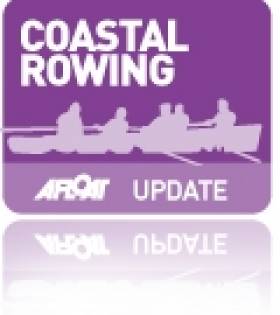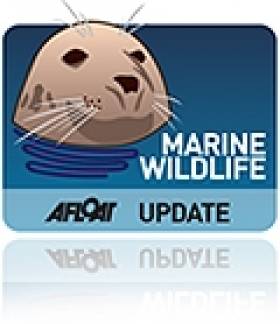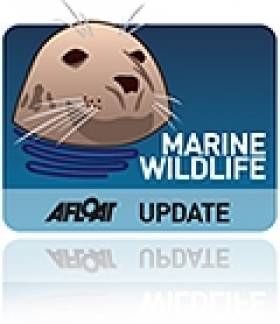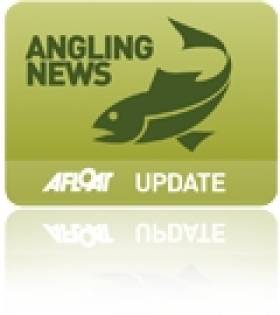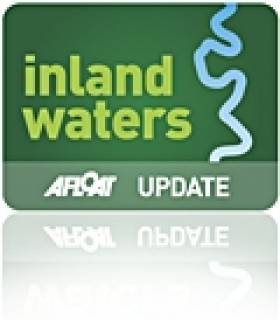Displaying items by tag: Wexford
Arklow RNLI Aids Fishing Vessel Off Courtown
#RNLI - Arklow RNLI came to the assistance of three fishermen whose vessel got into difficulty off the Wexford coast yesterday (6 March).
The volunteer lifeboat crew was alerted shortly before 1.30pm following a report that a fishing vessel was adrift four miles east of Courtown Harbour.
The all-weather lifeboat, the Ger Tigchleaar, was launched within minutes and proceeded to the scene where the vessel, the MFV Telstar, had lost steering power.
Having located the casualty, the crew members established a tow and began the journey back to Arklow. All three crew members who remained on board the MFV Telstar were returned safely ashore.
Speaking ashore, the vessel’s skipper James Russell, himself an Arklow RNLI volunteer crew member and experienced seaman, paid tribute to his fellow lifeboat crew members Eamon Kavanagh, Matt Heaney, Scottie Heaney, Michael Fitzgerald, Andy Loughlin and David Lee who came to his crew’s assistance.
"I thought we were well prepared for situations which might happen at sea but knowing the lifeboat is there when needed is a great help," he said. "When anyone gets in to difficulty they should have no hesitation in calling for help as I did today."
East Coast Rowing Council Announces 2013 Regattas
#CoastalRowing - The East Coast Rowing Council has announced its list of coastal rowing regatta fixtures in Dublin, Wicklow and Wexford for the 2013 season.
Commencing with the Greystones Regatta on 26 May, the schedule also includes events in Arklow (2 June) and Dalkey (9 June), the Stella Maria Regatta in Ringsend on 16 June and the Bray Regatta on 30 June.
July will see two events, the St Patrick's Regatta in Dublin's Docklands on 14 July and St Michael's Regatta off Monkstown and Dun Laoghaire on 28 July, while the Wicklow Regatta will mark the end of 2013's summer events on 5 August.
Locations of the various regattas and suggested viewing points are available HERE.
More Dead Seals Wash Up On Wexford Beach
#MarineWildlife - The Gorey Guardian reports that three seal carcasses were found washed up on Duncannon beach in Co Wexford this past Tuesday (22 January).
The National Parks and Wildlife Service is presently awaiting lab results to determine the seals' cause of death, a situation conservation ranger Tony Murray describes as "quite unusual".
He added that the carcasses of the three marine mammals were freshly dead and found to have no external injuries
As previously reported on Afloat.ie, the Irish Seal Sanctuary last month called for immediate action after a total of 12 seal carcasses were found dead on beaches in Wexford and Waterford in the span of a single week.
First Whales of 2013 Sighted Off Wexford
#MarineWildlife - The whale watching season is well under way off the coast of Wexford, as the Irish Whale and Dolphin Group (IWDG) reported its first sightings of 2013 this week.
Just an hour into the maiden cetacean spotting voyage of the IWDG's new research vessel Celtic Mist at the weekend, members of the group were treated to the sight of fin whales and minke whales feeding south of Hook Head - not to mention some of the 'superpod' of dolphins seen last week in the Irish Sea.
And as World Irish reports, local wildlife ranger Tony Murray spotted the first humpback whale of the year in the same area.
Murray suggested that "a large herring haul going on in the southeast at the moment" is the main attraction for the ocean giants and their smaller, more plentiful companions.
The IWDG's Facebook page has a photo gallery containing some stunning snapshots of the day's excursion HERE.
Renewed Concerns For Seals After Carcasses Found In South-East
#MarineWildlife - The Irish Seal Sanctuary has raised concerns after eight seals were found dead in Wexford and Waterford in recent days, as RTÉ News reports.
A shocking total of six carcasses were discovered near Fethard-on-Sea alone, while one apiece were found near Dunmore East and in Tramore - the latter reportedly decapitated.
The news comes just a few months after Johnny Woodlock of the Dingle Wildlife and Seal Sanctuary warned of a "swing of activity" in seal fatalities around Ireland earlier this year.
The most horrific of these incidents was the grisly scene of two baby seal heads nailed to a sign outside the Dingle wildlife sanctuary, accompanied by graffiti daubed in red paint reading 'RIP Cull' - presumed to be a reference to local fishermen's urging for a reduction of seal numbers in the area.
More recently, reports from Castlerock in Co Derry suggested that a dead seal found on the beach suffered a gunshot wound to the head.
All seals in Ireland are protected under national and EU law.
The Irish Seal Sanctuary is currently urging the National Parks and Wildlife Service to launch an investigation into these latest incidents, and is appealing to the public for information on these or other seal deaths.
Bass Fail to Show at First Hook Bass Angling Festival
#ANGLING - Bitterly cold weather and some hungry marine mammals kept the bass away from the inaugural Hook Bass Angling Festival in Wexford last weekend, as The Irish Times reports.
The angling went on regardless, however, with Mark Baker from Co Meath hooking a 1.5kg 'schoolie' of a flounder to take top prize of a five-day holiday at Grangecourt Holiday Homs and a day's fishing with Jim Foley.
All taking part enjoyed the weekend despite the absence of the titular fish, and promised to return next year - for which the dos and don'ts will be ironed out, according to Cathy Howlin of Hook Tourism.
Meanwhile, the weekend also featured an evening talk by Dr Ed Fahy who discussed the threat to Ireland's sea bass should the fishery be opened to commercial interests, and argued the case for bass angling tourism as a greater boon for the economy.
Two in a Row for Wexford in 'Something Fishy' Schools Initiative
#INLAND WATERWAYS - Ballygarrett National School in Co Wexford fended off competition from 125 other primaries nationwide to win the 'Something Fishy' education programme for 2012.
The school claimed the award and a cheque for €500 for their project ‘Fishylympics’, a quirky blend of the Olympics, The X Factor and well known public figures,
and today receive their award and cheque for €500 from Minister Fergus O Dowd at Wexford Education Centre, Enniscorthy, Co. Wexford.
Presented on DVD, 'Fishylympics' is a dramatisation of the obstacles our native fish have to overcome to survive and win in the Fishylympics.
"I am convinced that wonderful learning experiences have been achieved and solid work produced on the basis of what I have seen, you have demonstrated imagination and an extensive level of understanding," said Minister Fergus O'Dowd, who presented the pupils with their prize at the Wexford Education Centre in Enniscorthy last Friday.
Four-time All-Ireland winner and Wexford camogie all-star Catherine O'Loughlin was also on hand to present each child with a goody bag.
She noted Wexford's two-in-a-row victory in the ‘Something Fishy’ competition – Donard National School took top place last year for their ecosystem-themed musical - and urged other schools in Wexford to take up the challenge set by Minister O'Dowd to go for a third.
Something Fishy is an educational resource originally designed and promoted by Inland Fisheries Ireland, in conjunction with the Blackrock Educational Centre, and is aimed at at fifth and sixth class pupils.
Originally based on the life cycle of salmon, it allows students to explore water, fish, fish stocks, angling, invasive species, conservation of rivers and lakes, and fish as part of the food chain.
Something Fishy now covers all fish species and invasive species. As well as class-based work, fisheries officers take students into the field to get hands-on experience of their work.
The competition has been run over the last seven years nationwide, and this year more than 120 schools took part, reaching over 5,000 individual students.
IFI Seizes Illegal Bass and Nets Off Waterford and Wexford Coast
#FISHING - Inland Fisheries Ireland has in the last week seized illegally caught bass off the Wexford coast and illegal fishing nets off the Waterford coast.
While the specifics of these cases are not being released for legal and operational reasons, IFI says that the successful seizures are the result of "the flexibility and dedication of IFI staff".
The national fisheries body said that these types of seizures are often initiated following significant covert, intelligence-led policing operations which are carried out during both day and night time.
In both instances off-duty fisheries staff were quickly mobilised to execute the seizures.
The regional director at IFI praised the staff involved in the operation and described the seizures as very important in the protection of Ireland’s bass, salmon and sea trout resource.
It is widely held that illegal coastal fishing could have devastating consequences on the nation's valuable fishery resource.
Video Highlights of Irish Kitesurfing Nationals
#KITESURFING - WorldIrish has posted video highlights of the recent Irish National Kite Surfing Championships on Duncannon Beach as part of the annual Wexford Kite Surfing Festival.
Though the event was marred somewhat by a lack of strong winds which saw the cancellation of the men's competition, the women's and junior divisions made the best of the bad weather, with Tereza Siminova and 15-year-old James Hayden taking the top honours respectively.
Irish Kitesurfing Nationals in Wexford This Weekend
#KITESURFING - The annual Wexford Kite Surfing Festival on Duncannon Beach will once again play host to the Irish National Kite Surfing Championships this weekend 25-26 August.
Presented by the Irish Kitesurfing Association (ISKA) and Wexford-based start-up school Hooked Kitesurfing, the two-day content will present the best in junior, men's and women's kitesurfing in course racing and freestyle events.
As organiser Niall Roche tells Visit Wexford, the global field of competitors will for the first time be reflected with an international judging panel.
"It’s a real boost for the festival and indeed for kitesurfing in Ireland," he says. "This event will be the biggest kitesurfing event on the national calendar this year, we are expecting over 50 kitesurfers to compete."
And aside from the action on the water, the festival weekend includes fun for all the family from water zorbing to archery, face painting, power kite lessons for kids and a beach party with barbecue. Details of events and competition times are available HERE.



























